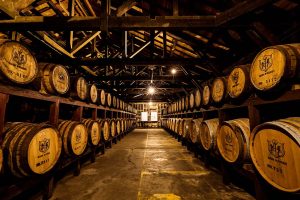A stroll to a small village with white-walled storehouses
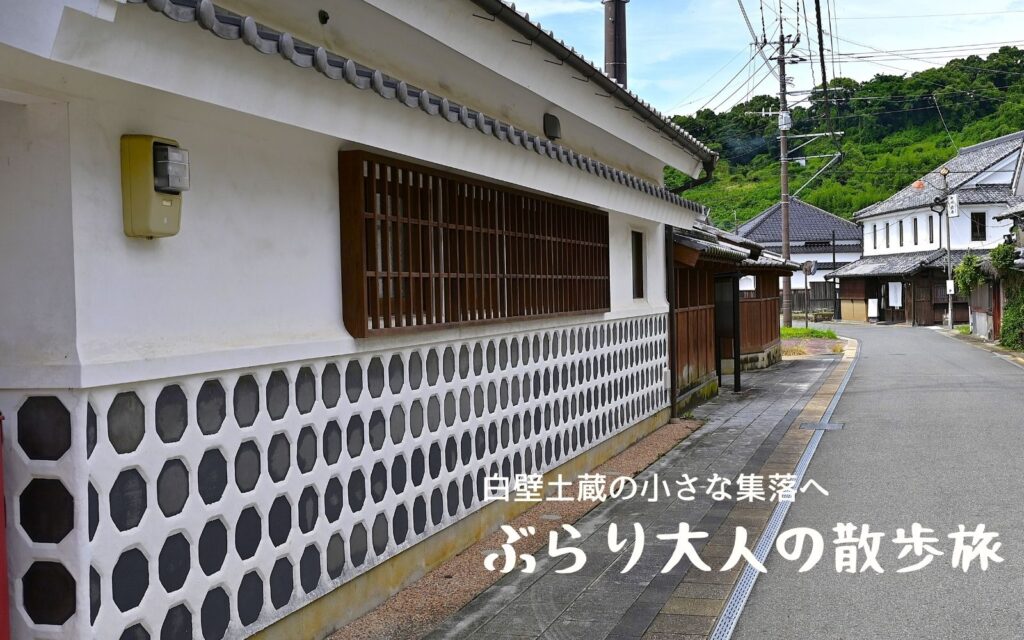
Index
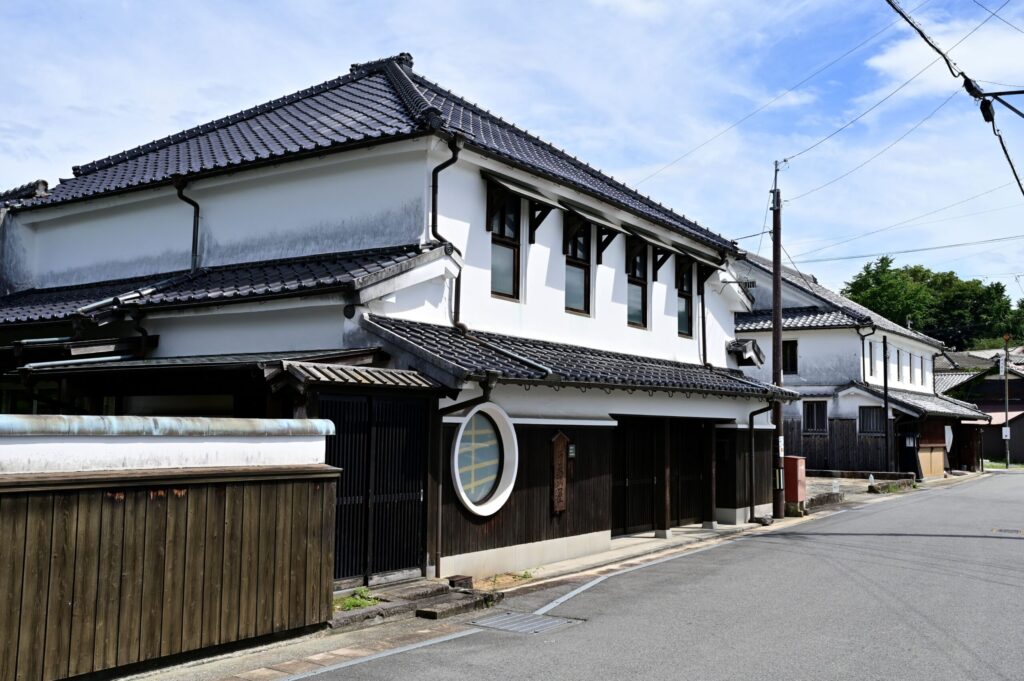
From the end of the Edo period to the beginning of the Showa period, merchant houses with white walls and storehouses were built in various areas.
The port town of "Matsuo Village" in Ugi City, Kumamoto Prefecture, has long been a thriving fishing village and a key port for the Higo clan. Because of the large number of people passing through, there were many merchant houses, and the remnants of these houses can still be seen today as the "Shirakabe Dozo (storehouses with white walls) of Matsuai. Although its existence is not well known to those in the know, it has an unspoiled charm that makes one feel a sense of nostalgia even though it is the first time to visit.
A village along the Shiranui Sea that prospered from brewing and fishing
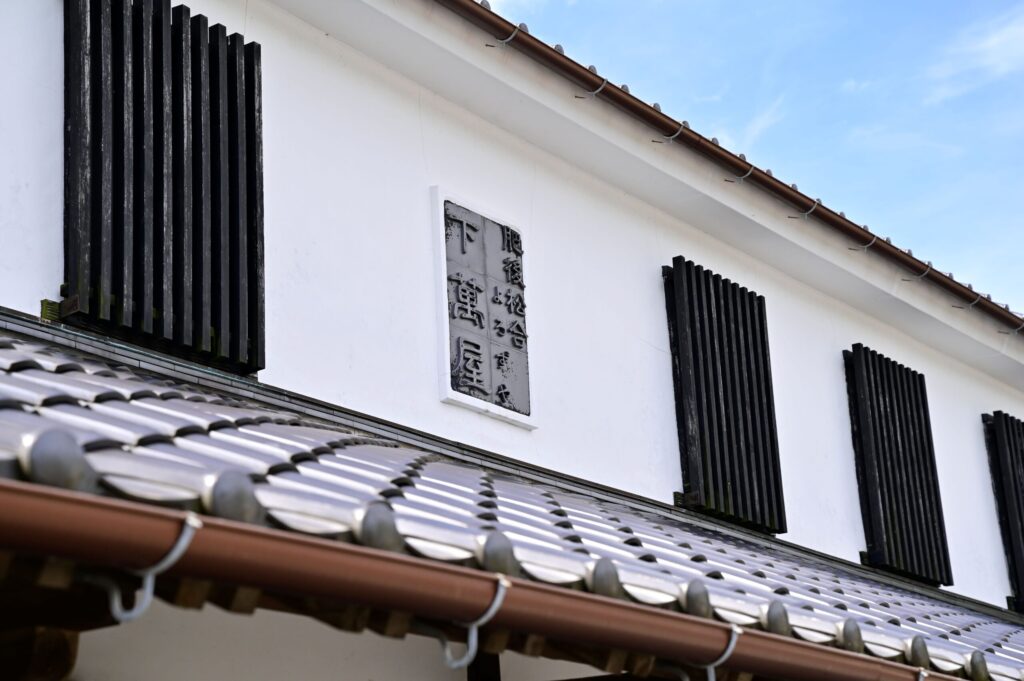
From the Matsuhashi Interchange, drive toward Amakusa on Route 226 along the Yatsushiro Sea on the south side of the Udo Peninsula. The surface of the sea glistening in the sunlight is beautiful. The Yatsushiro Sea is also called Shiranui Sea. At midnight on the first day of the eighth lunar month, a mysterious fire appears on the sea. It is one of the mirage phenomena, but the name "Shiranui," or "fire that no one knows," along with the legend associated with Emperor Keiko, became another name for the sea over time.
Shortly after passing the "Roadside Station" Shiranui, we arrived at the village of Matsuai. There are no prominent tourist signs, and it is the kind of village that one might pass by without noticing it. However, from the Edo period (1603-1868) to the early Meiji period (1868-1912), the village flourished as a fishing port, and was prosperous with businesses such as shipping agents, marine products dealers, and brewers of soybean paste, soy sauce, and sake. On the other hand, fires broke out frequently, and houses with white walls and earthen storehouses were built for fire prevention, and a path called a firebreak road was established.

Due in part to the storm surge damage in 1999, when 77 houses were completely destroyed, few of the white-walled storehouses remain in the village. Even so, the villagers are carefully protecting the remaining white-walled storehouses. The "Matsuo Local History Museum" is a private residence that at one time also served as a post office. It was built in 1903, during the heyday of the village. We asked to visit the caretaker's office located two doors down. It is open to the public free of charge, and the caretaker is happy to explain in a friendly manner.
Now, here is a piece of trivia about Matsuo village.
The horror movie "The Ring" became a hot topic in 1998. The mother of "Sadako," whose long, pitch-black hair and sneaking out of a well and even coming out of the screen is so frightening, is believed to be a real person, and this museum will tell you that she is actually from Matsugai.
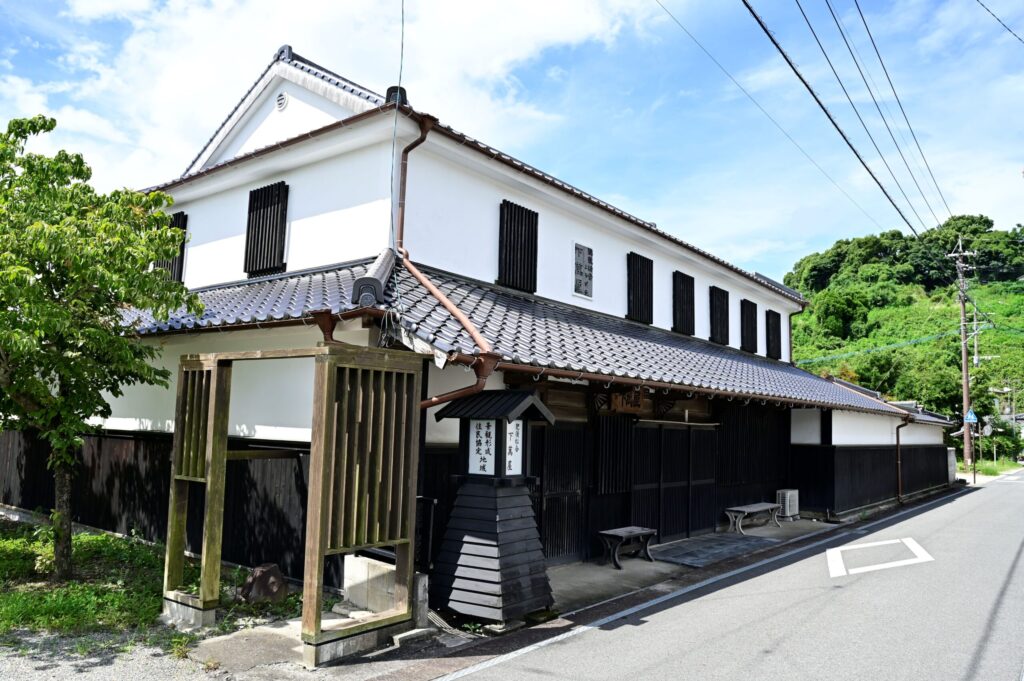
| name | Matsuai Local History Museum |
|---|---|
| Location | 136-1, Matsuai, Shirani-cho, Ugi, Kumamoto 869-3472, Japan |
| phone | 0964-42-3560 |
| Business Hours | 10:00-17:00 |
| closed day | Mondays, Thursdays (or the following day if the Monday falls on a national holiday), Year-end and New Year holidays |
Cafe in an old white-walled house run by orchard farmers
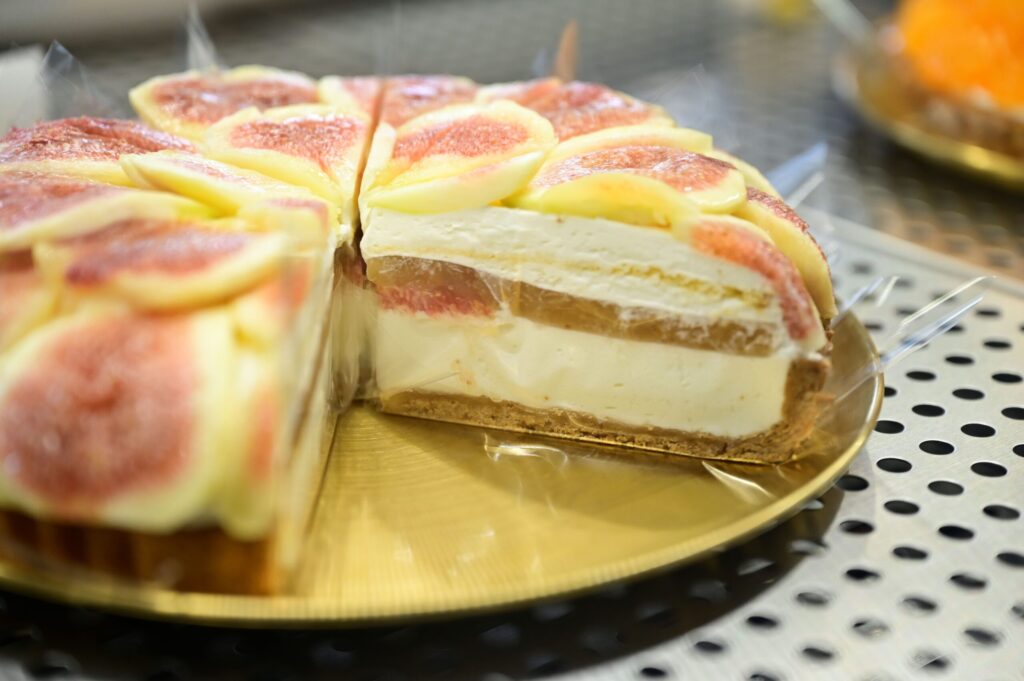
In the quiet village of Matsuai, there is a store specializing in tarts. It is Fruit Tart Tenmaya, run by Uchiyama Orchard.
Tenmaya" is a former miso and soy sauce shop, and the building is 130 years old. Takahiro and Erika Uchiyama, a young fruit farmer born and raised in the area, opened the business last June. In fact, Erika's great-grandfather served as an apprentice at Tenmaya. The signboard from those days is displayed at the eaves of the building.
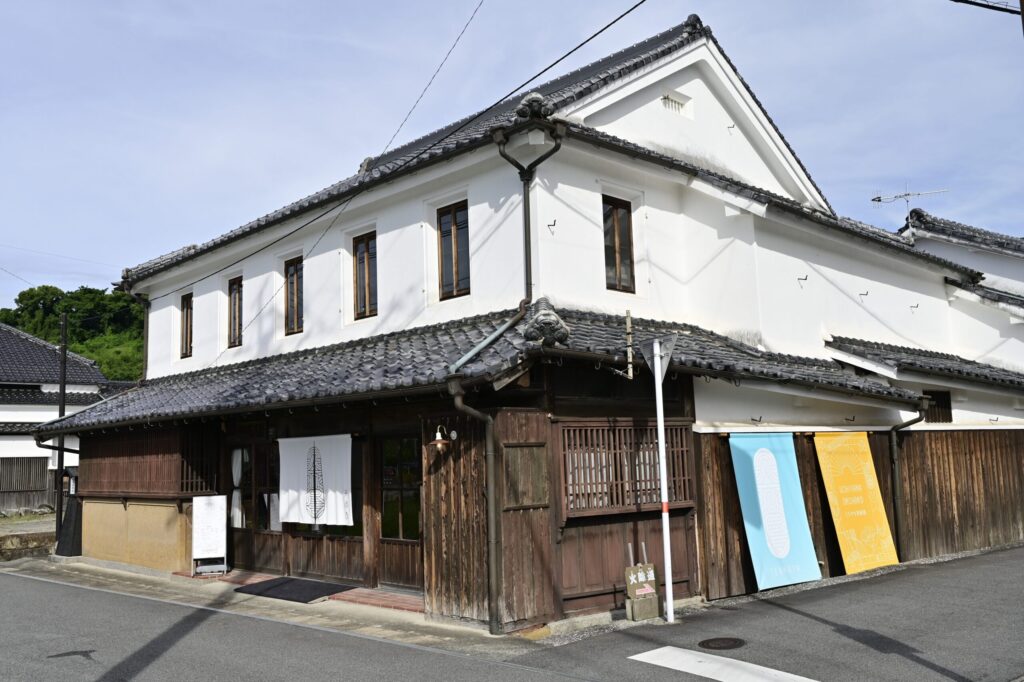
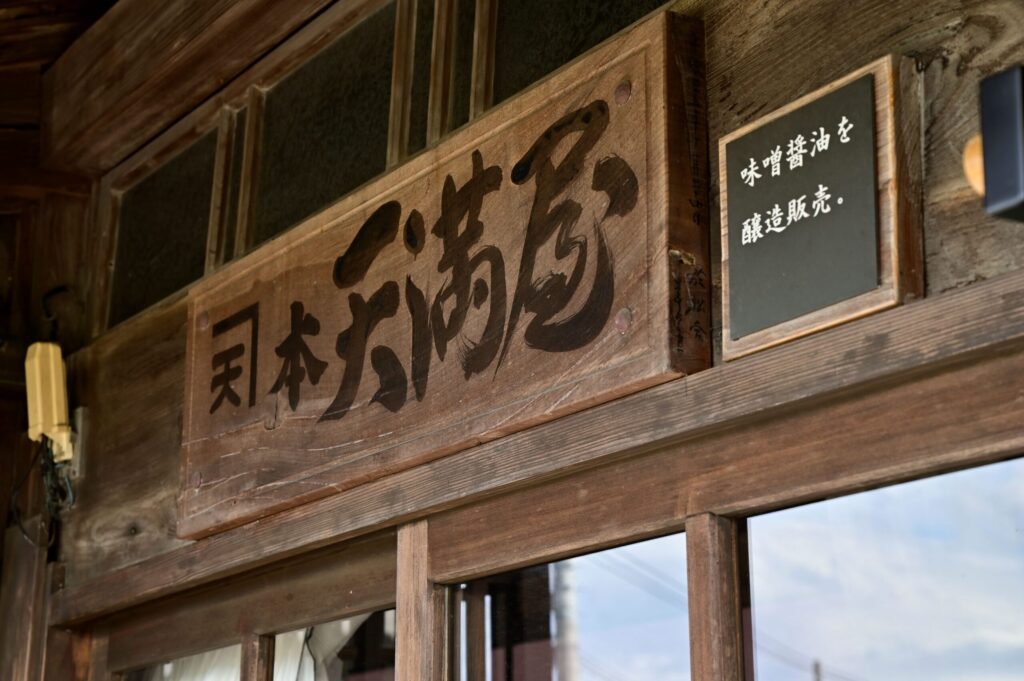
A showcase is placed in the spacious earthen floor of the old merchant's house, where fresh tarts made from fruits directly from the orchard are lined up. Behind the showcase, a sign from the past stands, and the sturdy beams, vintage lamps, and steeply sloping staircase remind one of the old days. A huge barrel of soy sauce sits in the tatami room! It sits in the tatami room.
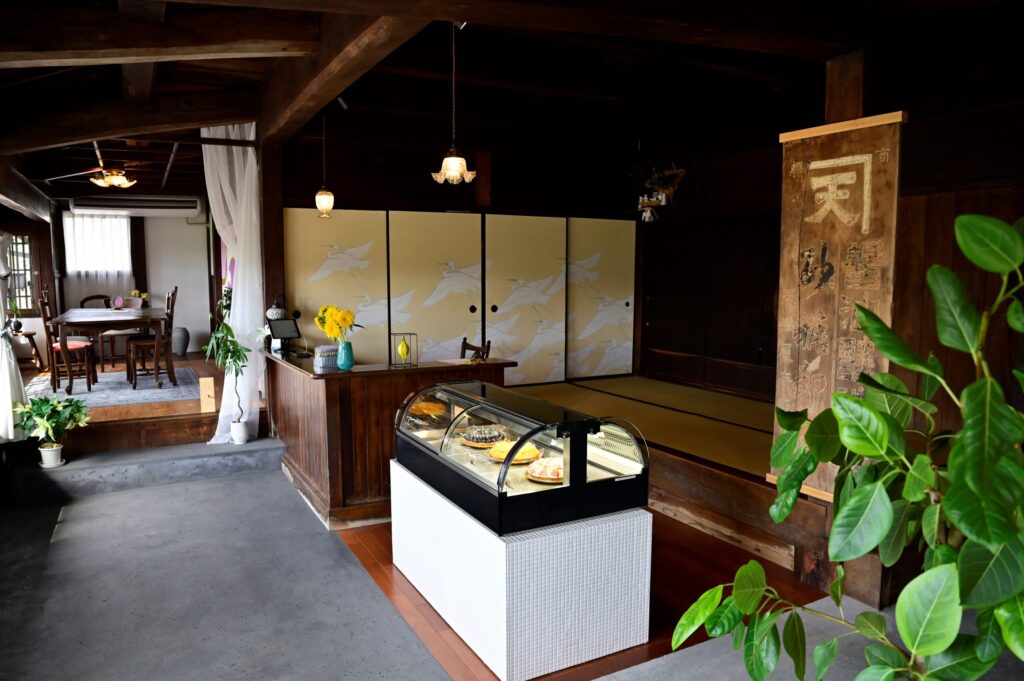
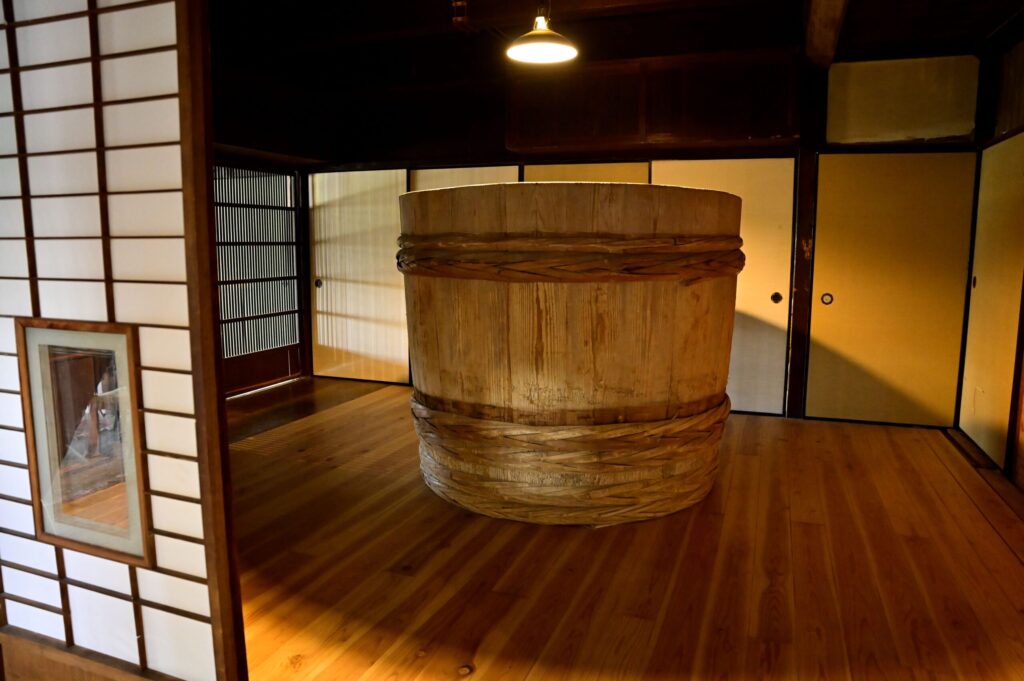
The space has a nice atmosphere and is very relaxing. Time seems to flow slowly.
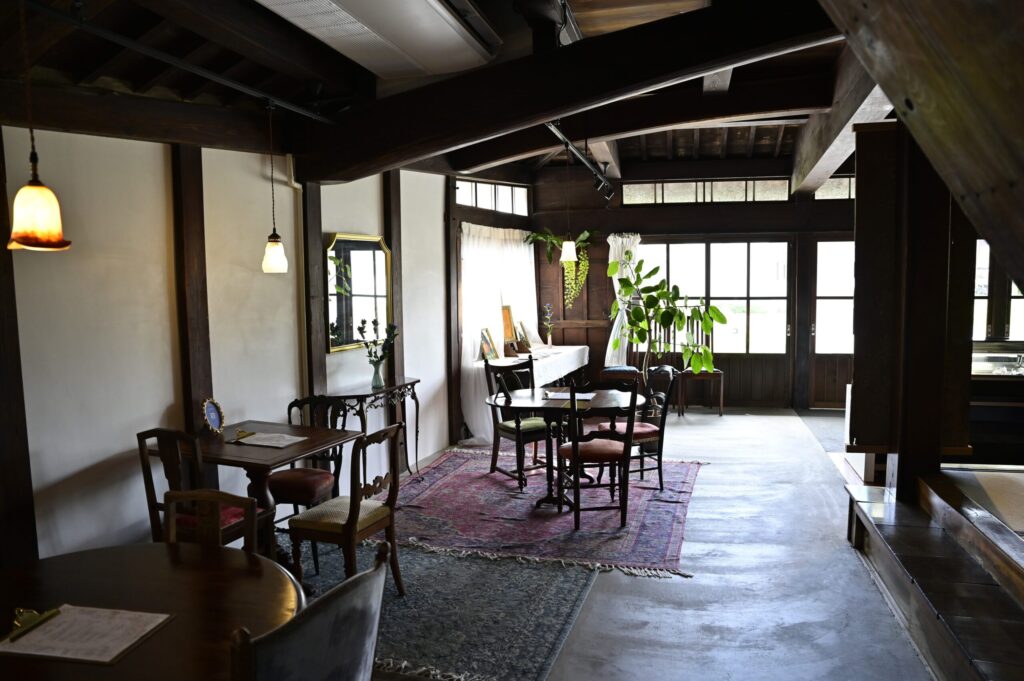
In its retro appearance, you will enjoy a beautiful tart that looks like a jewel. The fresh taste of seasonal fruits spreads out. For a drink, try the restaurant's signature "Meyer Lemon Soda. The Meyer lemon is a variety of lemon that is a cross between an orange and a Meyer lemon. It has a refreshing taste with a harmony of sourness and sweetness. The charm of a fruit farmer can be felt to the fullest. You can spend a relaxing time with the atmosphere created by the old merchant's house that has been ticking away the years. It is a perfect place to spend a holiday.
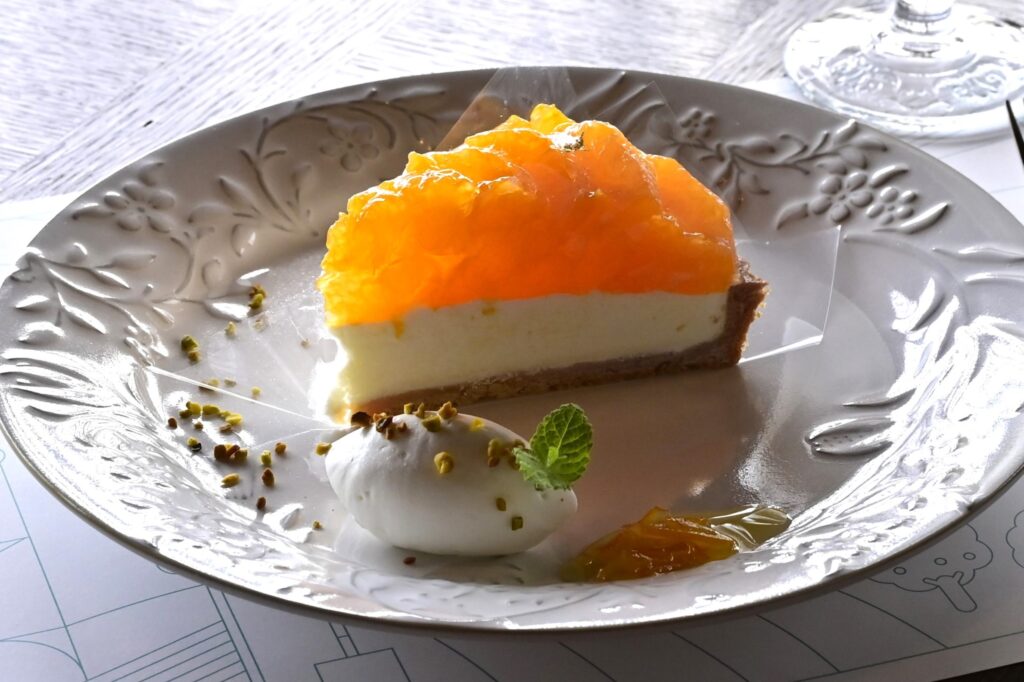
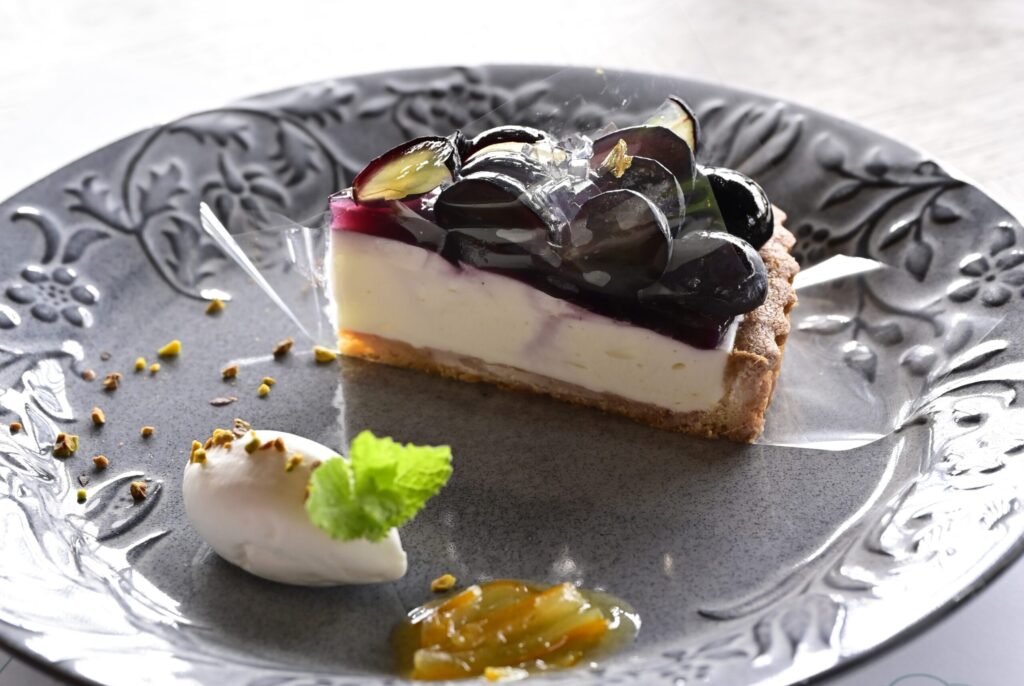
| name | Fruit Tart Tenmanya (Uchiyama Orchard) |
|---|---|
| Location | 854 Matsuai, Shirani-cho, Ugi, Kumamoto 869-3472, Japan |
| phone | 0964-42-2351 |
| Business Hours | 11:00-17:00 |
| closed day | Wednesday, Thursday |
The early bird gets the worm! Monthly morning market is very crowded
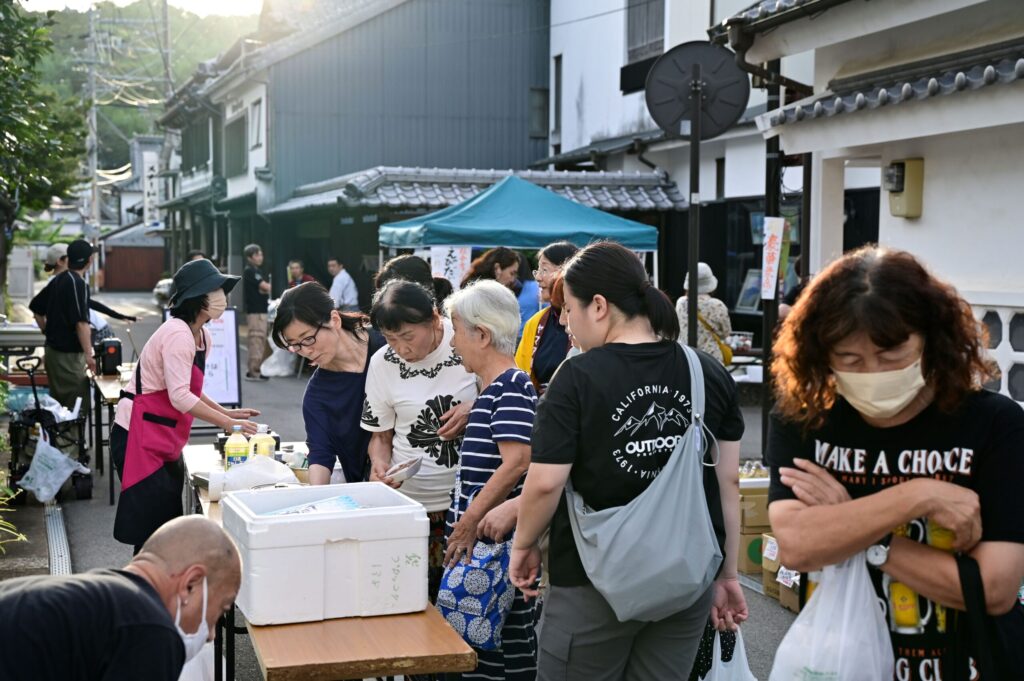
The small, unobtrusive village of white-walled storehouses is bustling with activity from early in the morning. This is the "Macha Morning Market," which starts at 6:00 a.m. on the third Sunday of every month.

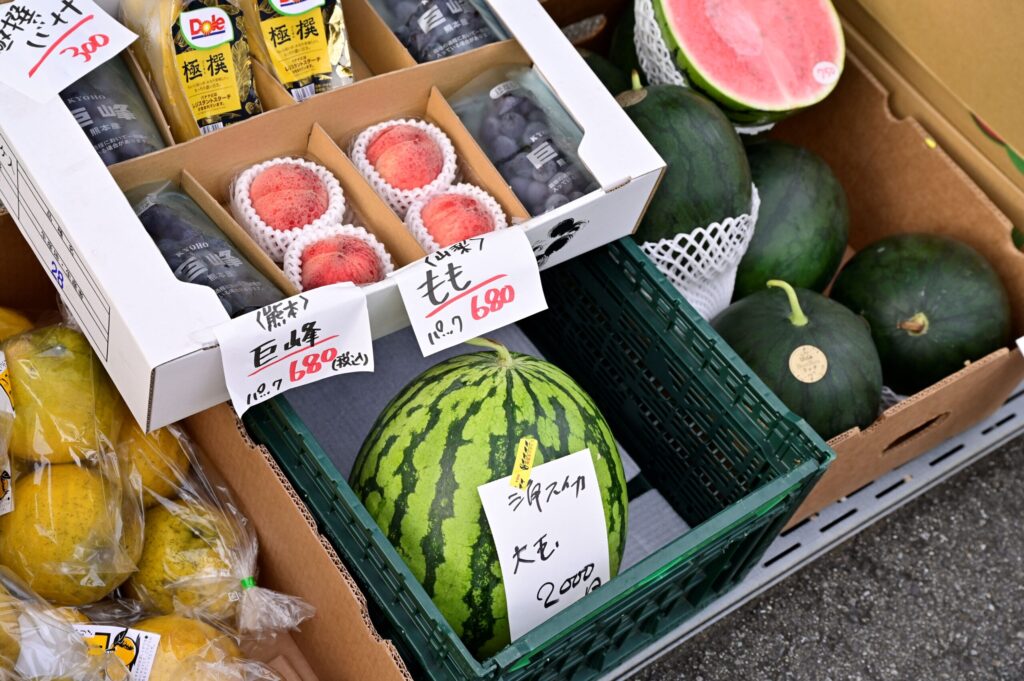
Local volunteers got together and formed the "Macha Ikaso Kai" (Let's Make the Most of Macha), which started in 1992. In fact, Takahiro Uchiyama is the current president of this association. He succeeded Junzo Sakamoto, the first chairman, who led the association for a long time. The morning market is run by volunteers. The products of local fishermen and farmers are displayed at the morning market. Products from the mountains and the sea line the market, and handmade side dishes are also sold.
▶Read an interview with the chairman of the "Macha Ikasoukai" (Let's make the most of it)
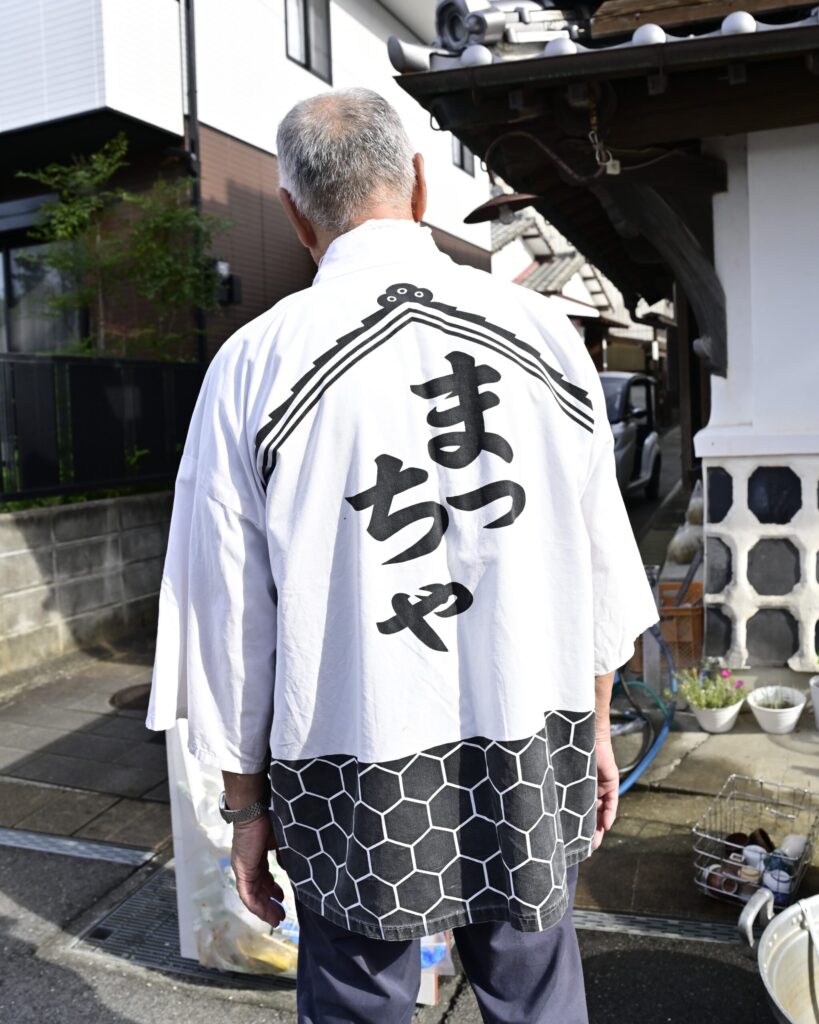
This morning market has been going on for more than 30 years and is well established in the neighborhood. Every time, customers come from Kumamoto City, Udo City, and other nearby areas. The fresh, inexpensive fish and vegetables are of course the main attraction, but the famous "shrimp dago soup" sells out in no time at all. For the customers who come from early in the morning, it is a substitute for breakfast.
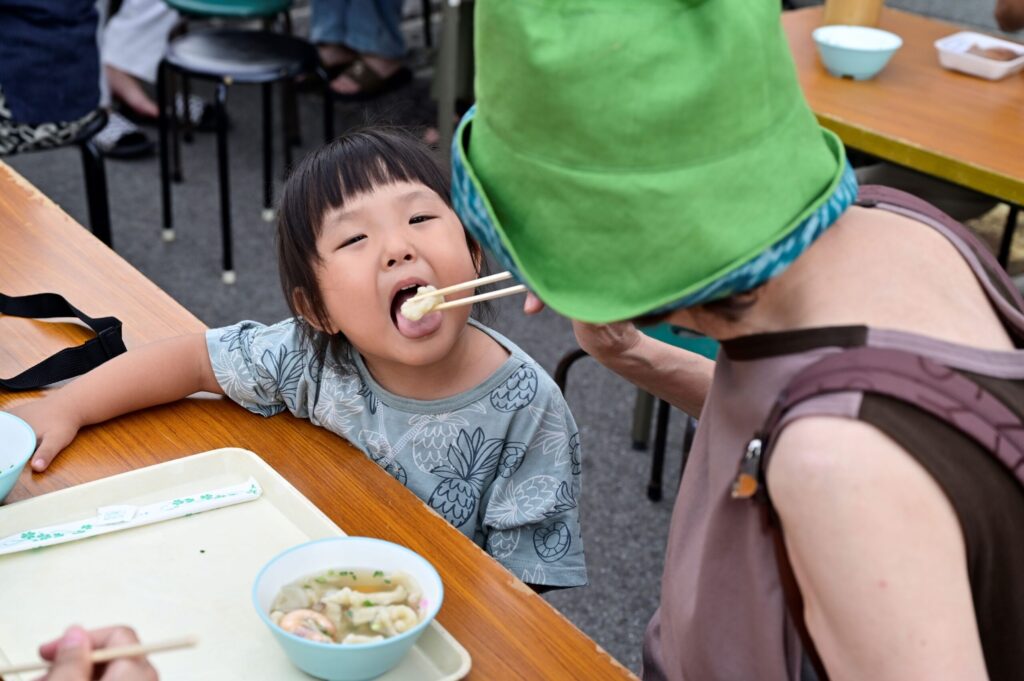

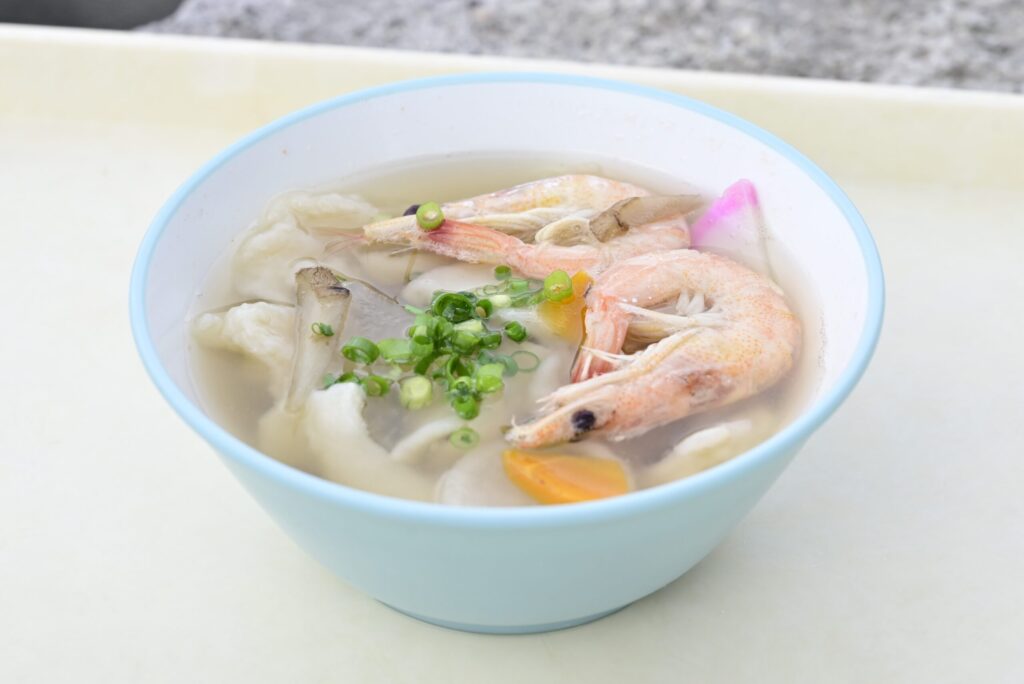
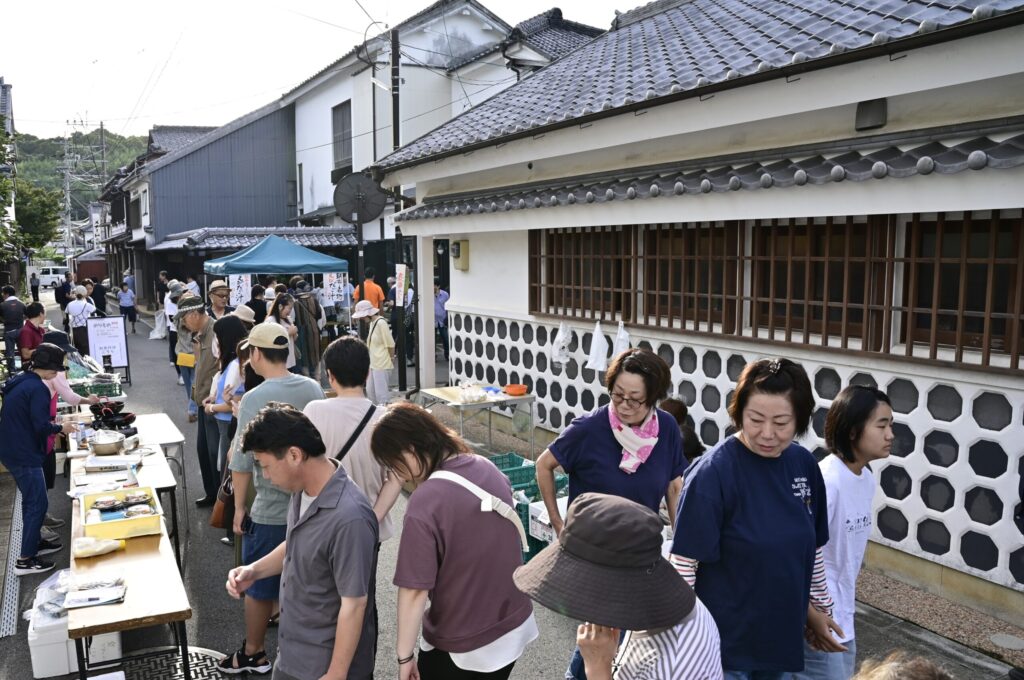
Another specialty is the all-you-can-stuff miso. Matsuai Shokuhin, the only remaining long-established manufacturer of miso and soy sauce in the village, provides miso. Here, too, there is a long line of people waiting for their turn to fill their bags with miso, and participants are eager to fill their bags with as much miso as possible. The participants, both men and women, were pushing miso into the bags, saying, "I can put more in, I can put more in. It is a human psychology, even though the cost should have been paid for by the participants.
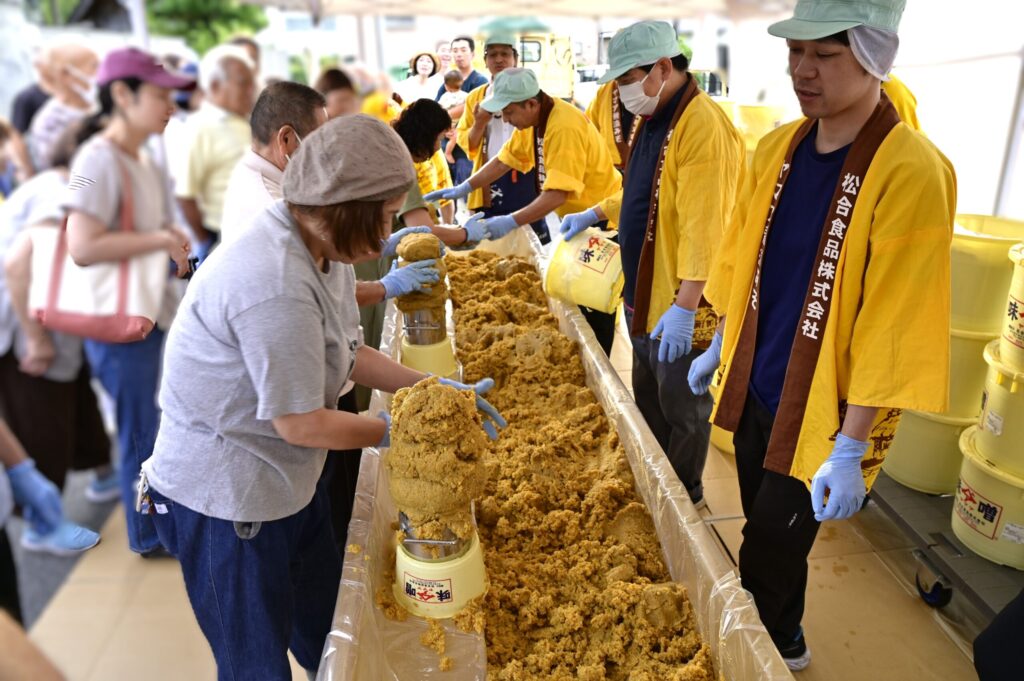

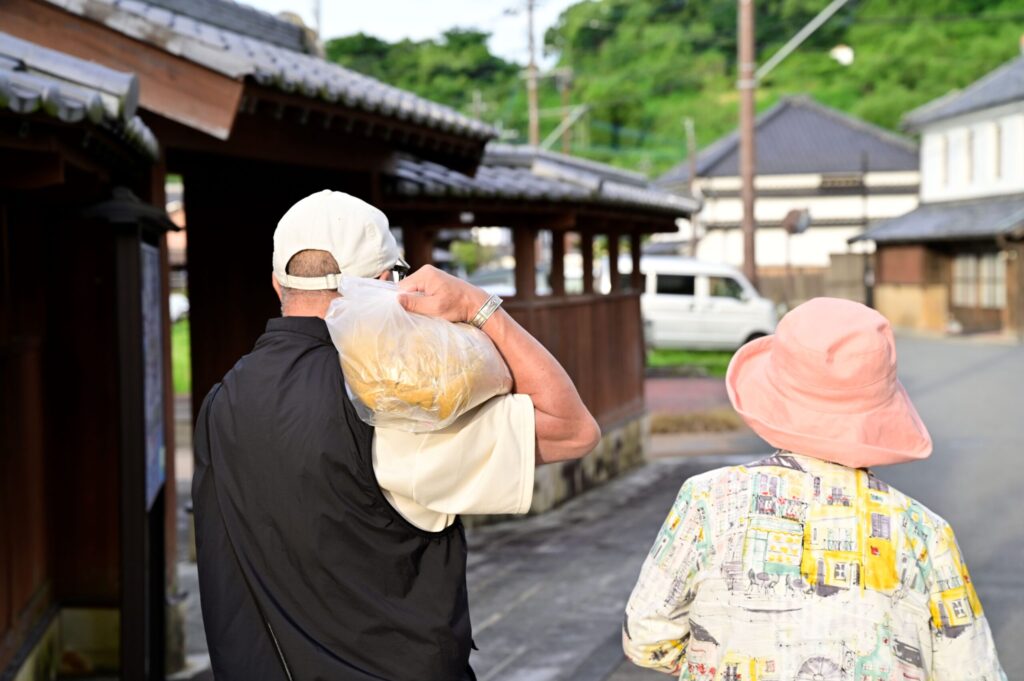
Other events include a rock-paper-scissors-scissors tournament and a tuk-tuk test-ride, and the morning market ends at 8:00. Participants return home with products from the mountains and sea of Matsuo and miso. The next month, the market will be held again. There are hidden fans in Matsuo village.

There are many historic white-walled towns remaining in Kyushu, and we recommend taking a stroll through them to enjoy their different histories and characteristics. We hope you will enjoy the history and delicacies of Kyushu on a tour of the white-walled towns.
Read more about the Town of White Cliffs
Fukuoka prefecture (Kyushu)Yame Fukushima Hina no Sato. A town of handicrafts that retains the atmosphere of a castle town
Oita prefecture (Kyushu)Hozokuke Honke Fushunkan


